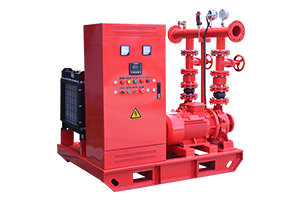Which Fire Pump Configuration Minimizes Maintenance Costs?
Fire pumps play a critical role in ensuring the effectiveness of fire safety systems. For facility managers and fire safety professionals, minimizing maintenance costs without compromising performance is a top priority. This article explores fire pump configurations and their impact on maintenance requirements, helping you make informed decisions.

Key Factors Affecting Maintenance Costs
-
Type of Fire Pump
-
Electric Fire Pumps: These pumps typically require less maintenance compared to diesel engine pumps, as they have fewer moving parts and no fuel system to maintain. However, they rely on a stable electrical supply.
-
Diesel Engine Fire Pumps: While robust and independent of electrical power, these pumps demand more frequent checks and maintenance for components like the engine, fuel system, and batteries.
-
-
Pump Materials and Quality
-
Opting for high-quality materials like stainless steel or bronze for key components can reduce corrosion and wear, leading to lower maintenance demands.
-
-
Compliance with Standards
-
Ensuring your fire pump is UL listed and NFPA 20 compliant can guarantee reliable performance and reduce the likelihood of unexpected repairs.
-
Best Configurations to Minimize Maintenance
-
Electric Fire Pump Packages
-
When paired with a reliable power source, electric fire pumps are the best option for minimizing maintenance costs. Their simplicity and durability make them a long-term cost-effective choice.
-
-
Jockey Pumps for Pressure Maintenance
-
Jockey pumps maintain pressure in the system, preventing unnecessary startups of the main fire pump. This reduces wear and prolongs the lifespan of the primary pump.
-
-
Properly Designed Fire Pump Sets
-
Integrated fire pump sets with matching components ensure optimal performance. This includes the right combination of electric, diesel, and jockey pumps tailored to your building’s needs.
-
Maintenance Tips for Cost Optimization
-
Regular inspections by qualified personnel to identify potential issues early.
-
Following the manufacturer’s maintenance schedule for lubrication, alignment, and component checks.
-
Investing in remote monitoring systems to detect anomalies in real-time, reducing the need for frequent on-site visits.
Conclusion
Choosing the right fire pump configuration significantly impacts maintenance costs. Electric fire pumps, high-quality materials, and integrated systems with jockey pumps are key to cost efficiency. Partnering with a reliable fire pump manufacturer like Better Pump ensures you receive not only the best equipment but also expert advice tailored to your needs.






